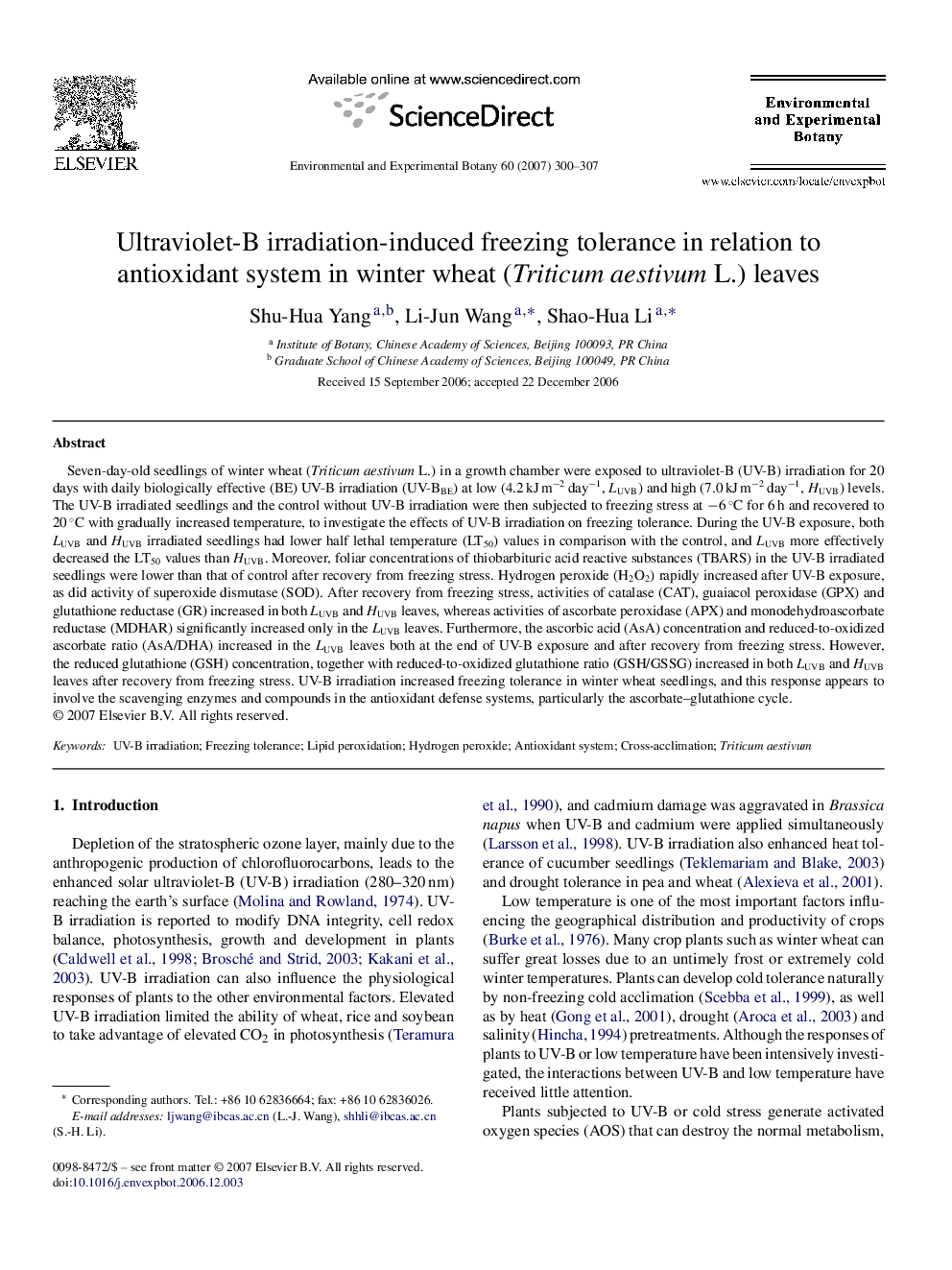| Article ID | Journal | Published Year | Pages | File Type |
|---|---|---|---|---|
| 4555457 | Environmental and Experimental Botany | 2007 | 8 Pages |
Abstract
Seven-day-old seedlings of winter wheat (Triticum aestivum L.) in a growth chamber were exposed to ultraviolet-B (UV-B) irradiation for 20 days with daily biologically effective (BE) UV-B irradiation (UV-BBE) at low (4.2 kJ mâ2 dayâ1, LUVB) and high (7.0 kJ mâ2 dayâ1, HUVB) levels. The UV-B irradiated seedlings and the control without UV-B irradiation were then subjected to freezing stress at â6 °C for 6 h and recovered to 20 °C with gradually increased temperature, to investigate the effects of UV-B irradiation on freezing tolerance. During the UV-B exposure, both LUVB and HUVB irradiated seedlings had lower half lethal temperature (LT50) values in comparison with the control, and LUVB more effectively decreased the LT50 values than HUVB. Moreover, foliar concentrations of thiobarbituric acid reactive substances (TBARS) in the UV-B irradiated seedlings were lower than that of control after recovery from freezing stress. Hydrogen peroxide (H2O2) rapidly increased after UV-B exposure, as did activity of superoxide dismutase (SOD). After recovery from freezing stress, activities of catalase (CAT), guaiacol peroxidase (GPX) and glutathione reductase (GR) increased in both LUVB and HUVB leaves, whereas activities of ascorbate peroxidase (APX) and monodehydroascorbate reductase (MDHAR) significantly increased only in the LUVB leaves. Furthermore, the ascorbic acid (AsA) concentration and reduced-to-oxidized ascorbate ratio (AsA/DHA) increased in the LUVB leaves both at the end of UV-B exposure and after recovery from freezing stress. However, the reduced glutathione (GSH) concentration, together with reduced-to-oxidized glutathione ratio (GSH/GSSG) increased in both LUVB and HUVB leaves after recovery from freezing stress. UV-B irradiation increased freezing tolerance in winter wheat seedlings, and this response appears to involve the scavenging enzymes and compounds in the antioxidant defense systems, particularly the ascorbate-glutathione cycle.
Keywords
Related Topics
Life Sciences
Agricultural and Biological Sciences
Ecology, Evolution, Behavior and Systematics
Authors
Shu-Hua Yang, Li-Jun Wang, Shao-Hua Li,
